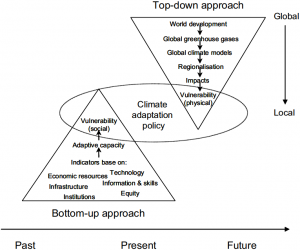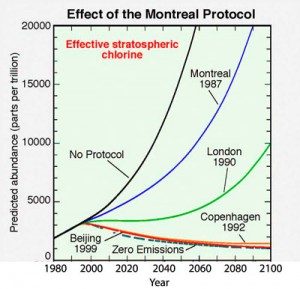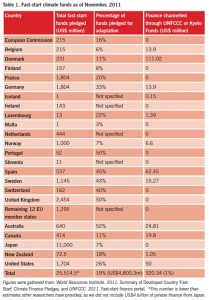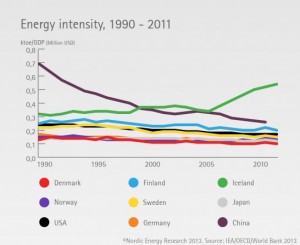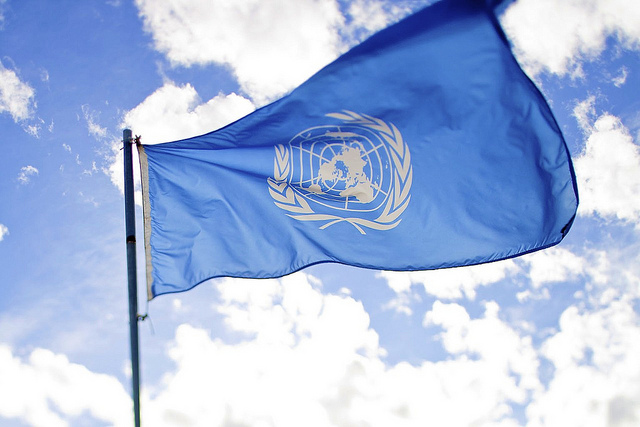In my Religion and Modern Culture class, we have talked about paradigm shifts this semester which is directly related to the climate change conversation. The movie, “An Inconvenient Truth” is a, excellent example of a paradigm shift emerging. The movie, and the work of Al Gore, is an attempt at shifting the worldview of the climate change problem. The movie acts to summarize a brief synopsis of the problem and it does so in a way that can be easily understood to the general public and is easily relatable. Towards the end of the movie, Gore brings up the topic of the Kyoto Protocol. The United States originally signed the Kyoto Protocol but never ratified it; this caused a huge global controversy that continued along with the US not ratifying the second commitment period to Kyoto. Where the visible shift can be seen is through initiatives in the United States being taken in California and the nine north eastern states banding together to take action. In Gore’s presentation, he shows a list of a multitude of major cities that are in support of the Kyoto. This is where the paradigm shift is starting to be seen, at the bottom-up level.
He also mentions, towards the end of the movie that he is doing his part by doing what he can. This entails giving presentations in major cities all around the world, addressing people at a more local level. His approach of conveying the message and the approach of the movie is extremely similar to that of James Balog and the film Chasing Ice. Sitting and chatting with Balog on a more personal basis and seeing his presentation while he visited Dickinson really put a lot of things into perspective. Balog, in the same way that Gore does, conveys his message in the best way he possibly can, through his photography. Both men express a sense of urgency and the need for further communication. Gore mentions that the issue of the ozone hole has been depleted; the climate change problem is not completely out of our grasp. What is needed, is a complete shift in cooperation globally, a paradigm shift. Not everyone is currently sitting at the table, but everyone is invited.
Eight years has passed since this movie came out and the shift is still continuing; there is power growing. I think the Peoples Climate March, the largest climate march in history, that took place recently is an extremely powerful example of the movement. Well over 400,000 people took the streets of Manhattan to express their voices and to take a stand. However, the shift needs to continue. Even here at Dickinson College, ranked in the nation among the most environmentally friendly schools, still needs change. There are people that don’t think anything of their actions throughout their day, perhaps they should. Everything we do in our everyday lives, literally everything, has an impact. The amount of times I hear students and friends say that their minute actions make no difference, that one or two things makes no difference, is literally sickening. The fact that people can leave their phone charger plugged into a wall while it is not in use and it is still emitting .5 pounds of carbon into the atmosphere per hour is again, a sickening thought. People NEED to be more conscious. The shift must continue.
The title of the movie is what it is; the issue of climate change that needs to be addressed is inconvenient in many ways. It has been ignored for so many for way too long because people would rather pretend the problem is not there than actually address it head on. The novel, Merchants of Doubt, by Naomi Oreskes is a perfect example of doubt being used in many controversies over time. It is inconvenient both in that we have to deal with it and it’s impacts on today’s world, with some nations being more vulnerable than others. The definition of sustainability, to uphold the needs of today’s people without compromising the needs of future generations, relates to this inconvenience in that the paradigm shift must occur in order to comply with the needs of future generations.


